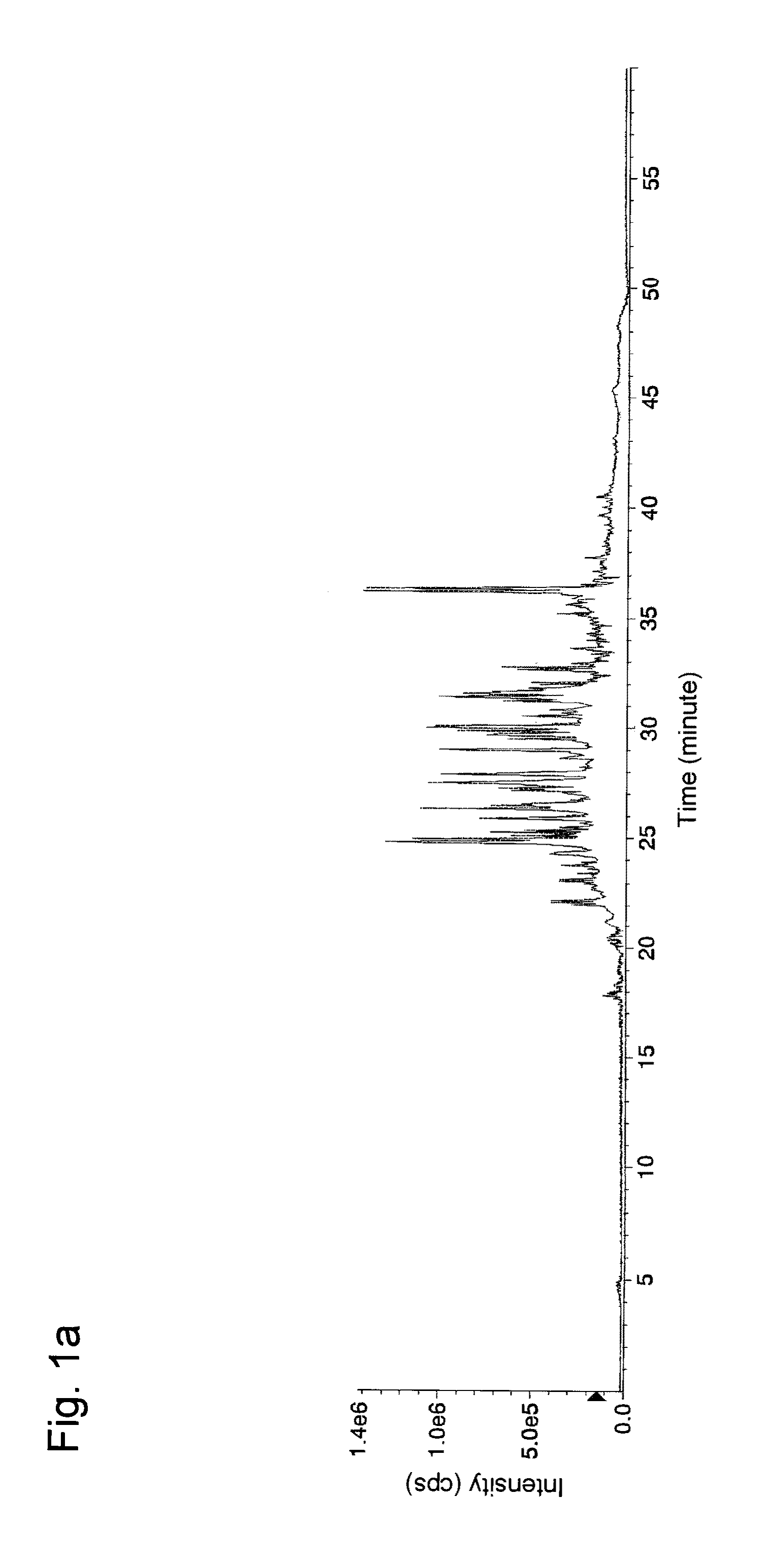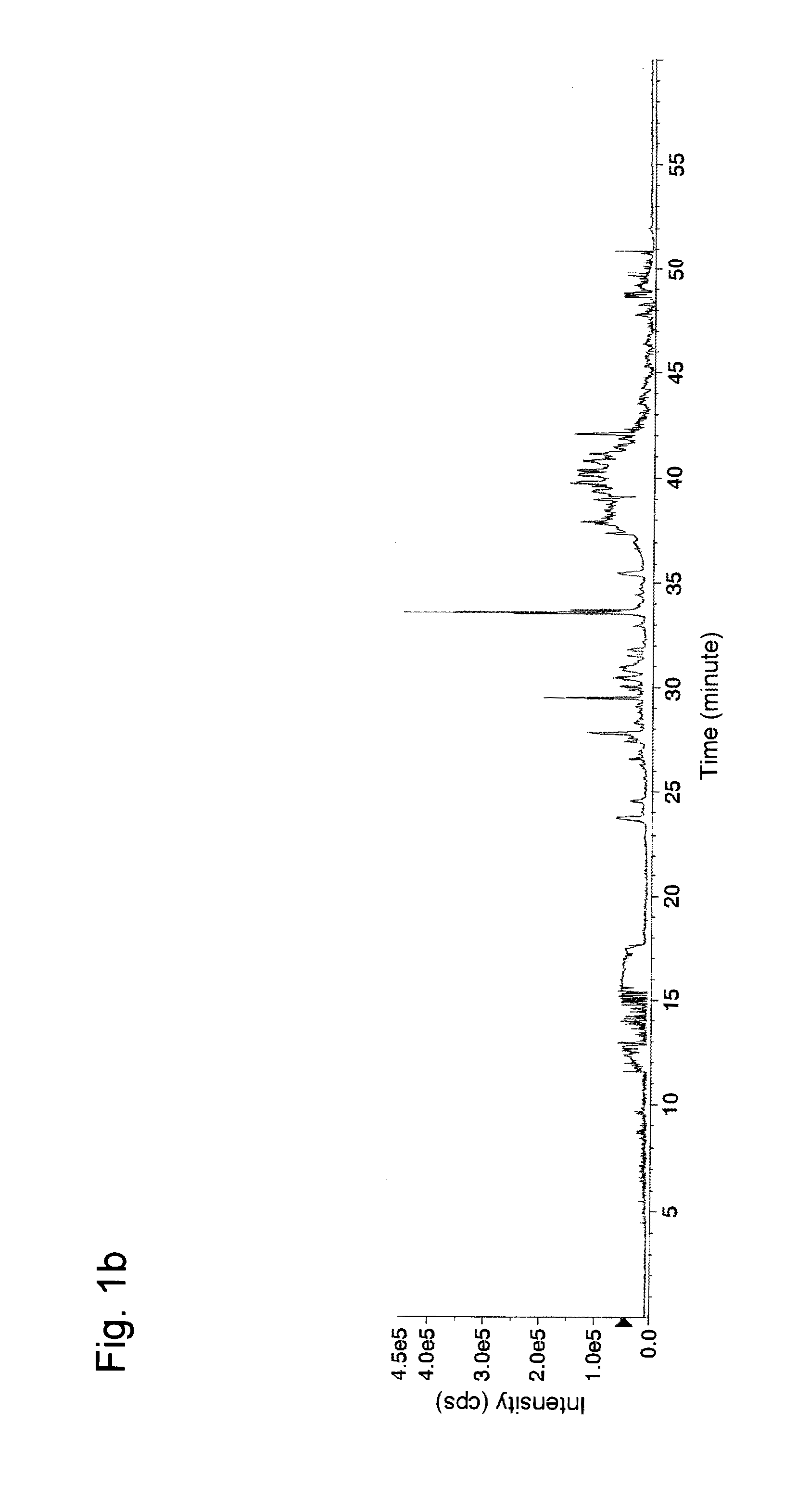Method of separating phosphorylated peptide or phosphorylated protein
a phosphorylated peptide and protein technology, applied in the field of separation of phosphorylated peptides or phosphorylated proteins, can solve the problems of difficult to solve the above problem, inability to be generally used, and contamination of mass spectrometers, so as to improve the efficiency of separation of phosphorylated peptides and/or phosphorylated proteins.
- Summary
- Abstract
- Description
- Claims
- Application Information
AI Technical Summary
Benefits of technology
Problems solved by technology
Method used
Image
Examples
first embodiment
[0032]According to the method of separating a phosphorylated peptide and / or a phosphorylated protein of the present invention, when a sample containing a phosphorylated peptide and / or a phosphorylated protein is supplied to a separation unit filled with a metal oxide, an aliphatic hydroxycarboxylic acid is allowed to be present therein. Such an aliphatic hydroxycarboxylic acid may be added to the sample in a preliminary step or it may be independently supplied to a separation unit before supplying the sample to the separation unit. In addition, it is preferable that an aliphatic hydroxycarboxylic acid is added to the sample in a preliminary step and that it also is independently supplied to a separation unit before supply of the sample to the separation unit.
[0033]The term “aliphatic hydroxycarboxylic acid” used herein refers to a hydroxycarboxylic acid having an aliphatic skeleton. In some cases, it can include a hydroxycarboxylic acid with a skeleton that does not comprise an arom...
second embodiment
[0048]Further, as described above, the method of separating a phosphorylated peptide and / or a phosphorylated protein of the present invention is not limited to a method wherein a sample is allowed to come into contact with a metal oxide in the presence of an aliphatic hydroxycarboxylic acid. That is, the method of separating a phosphorylated peptide and / or a phosphorylated protein of the present invention may be a method comprising supplying a sample containing a phosphorylated peptide and / or a phosphorylated protein to a separation unit filled with titanium oxide comprising an anatase crystal and / or an amorphous crystal and undergoing a weight reduction of 3 to 70 mg / g during a process of increasing the temperature by 40° C. per minute to 800° C. following heating at 130° C. for 15 minutes upon differential thermogravimetric analysis. In other words, a phosphorylated peptide and / or a phosphorylated protein contained in a sample can be efficiently separated with the use of a chromat...
example 1
[0055]In Example 1, experiments for separation and concentration of phosphorylated peptides were conducted with the use of a variety of aliphatic hydroxycarboxylic acids.
[0056]First, α-casein (Sigma, Cat. No. C6780), fetuin (Sigma, Cat. No. F2379), and phosvitin (Sigma, Cat. No. P1253) (50 μg each) were separately dissolved in 0.05 M Tris buffer (pH 9.0, Sigma) (20 μL) containing urea (Bio-Rad, Cat. No. 161-0731) (8 M). 1 mg / mL dithiothreitol (Wako Pure Chemical Industries, Ltd. Cat. No. 040-29223: DTT) (1 μL) was added to each resultant, followed by incubation at 37° C. for 30 minutes for reduction of cysteine residues in each protein. Then, 5 mg / mL iodacetamide (Wako Pure Chemical Industries, Ltd. Cat. No. 091-02153) (1 μL) was added to each resultant, followed by incubation at 37° C. for 30 minutes for alkylation of the cysteine residues. 1 mg / mL Lys-C (Wako Pure Chemical Industries, Ltd. Cat No. 125-05061) (1 μL) was added to each resultant, followed by incubation at 37° C. for ...
PUM
| Property | Measurement | Unit |
|---|---|---|
| Temperature | aaaaa | aaaaa |
| Temperature | aaaaa | aaaaa |
| Dimensionless property | aaaaa | aaaaa |
Abstract
Description
Claims
Application Information
 Login to View More
Login to View More - R&D
- Intellectual Property
- Life Sciences
- Materials
- Tech Scout
- Unparalleled Data Quality
- Higher Quality Content
- 60% Fewer Hallucinations
Browse by: Latest US Patents, China's latest patents, Technical Efficacy Thesaurus, Application Domain, Technology Topic, Popular Technical Reports.
© 2025 PatSnap. All rights reserved.Legal|Privacy policy|Modern Slavery Act Transparency Statement|Sitemap|About US| Contact US: help@patsnap.com



